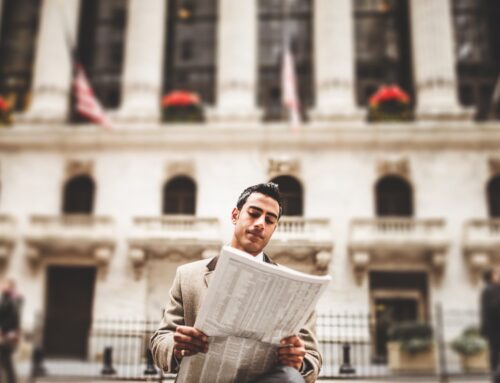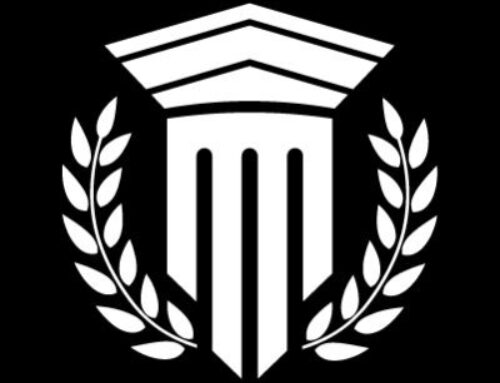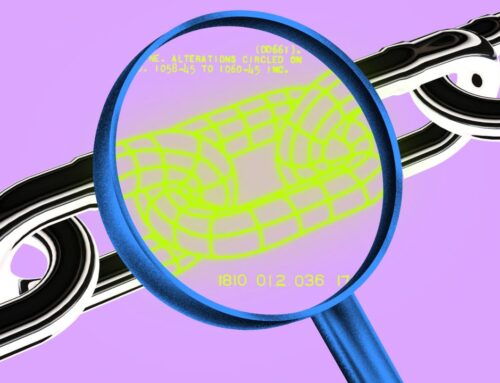Trump has called for a strategic bitcoin reserve. Here’s how it would work.
May 19, 2025
Early this year, President Trump announced the creation of a strategic bitcoin reserve, solidifying his administration’s view of cryptocurrency as a viable and valuable economic resource worth retaining.
Pledging to make the U.S. the “crypto capital of the world,” the president hosted a digital assets summit with AI and crypto czar David Sacks at the White House,with guests like Coinbase CEO Brian Armstrong and Chainlink co-founder Sergey Nazarov.
“In recent years, the U.S. government has foolishly sold tens of thousands of additional bitcoin that were worth billions and billions of dollars had they not sold them,” Trump said at the event.“From this day on, America will follow the rule that every bitcoiner knows very well: Never sell your bitcoin. That’s a little phrase that they have. I don’t know if that’s right or not. Who the hell knows? But so far, it’s been right, and let’s keep it that way.”
Cryptocurrency experts and those in the industry themselves are uncertain how big an impact Trump’s executive order stands to have — some say it is largely symbolic, while others argue that it could jump-start a broader global trend of international powers taking crypto more seriously.
Let’s break down how the policy works.
What is the strategic bitcoin reserve?
The principal purpose of the strategic bitcoin reserve is to maintain bitcoin as a reserve asset rather than sell off the supply the U.S. government has amassed in criminal and civil asset forfeiture proceedings.
Reserve assets serve to bolster a country’s currency and economy and provide a store the country can tap in times of emergency — similar to the Strategic Petroleum Reserve created in 1975 under President Gerald Ford over fear about continued access to crude oil after the 1973 oil embargo from the Organization of the Petroleum Exporting Countries.
In total, the United States holds 200,000 bitcoinsworth billions — the value has swung between $12 billion and $21 billion this year — the largest holding of any country. In the past, the U.S. government has routinely sold off parts of its bitcoin stake, resulting in the loss ofmore than $17 billion, the Trump administration says.
Trump’s executive order also signals that the U.S. government should become not just a holder of bitcoin but an active investor.The order directs the secretaries of Treasury and Commerce to “develop strategies for acquiring additional government bitcoin,” provided that they are “budget-neutral” and “do not impose incremental costs on U.S. taxpayers.”
That’s a significant shift from previous administrations, according to crypto experts.
“Almost independent of whether it’s a good financial idea, it’s absolutely saying this is a U-turn from where we were previously,” said Gene Hoffman, CEO and president of blockchain company Chia Network.“The previous administration at best tolerated bitcoin and did everything they could to make it riskier to hold. So no matter the financial analysis, it is absolutely a political analysis that the bitcoin reserve is the U.S. government saying: Nope, this is absolutely as much a part of the economy as gold or oil.”
Haider Rafique, global chief marketing officer for cryptocurrency exchange OKX, said the Trump administration is acknowledging a preference among younger generations for crypto markets over traditional investing. A recent YouGov study found that 42% of Gen Z investors have crypto, and only 11% maintain a retirement account.
“The point of the strategic reserve, as we see it, is to make sure that the American people have the ability to … own a certain amount of supply,” Rafique said. “This is a supply that can then benefit and become a hedge for our debt crisis, for inflation and for a number of other economic downsides that we’re facing as a country.”
After all, as Rafique notes, the crux of bitcoin’s appeal has always been in its limited supply: There will only ever be 21 million bitcoins in circulation globally.
It’s a transition even for Trump himself — his first term featured what Seth Hertlein, vice president and global head of policy for digital assets security company Ledger,called an “agnostic” approach. The administration was neither “hostile” nor “supportive,” Hertlein said.
“The executive order really just said, ‘We, the government, already have a bunch of this stuff, and we’re not going to sell it anymore,’” he said. “At a concrete level, it’s not that profound, but it signifies that we feel this asset has value and, likely over some time horizon, will increase in value, and we want to capture those gains and stop losing them as we have in the past by selling them.”
What else is in the executive order?
Trump also called for the establishment of a U.S. Digital Asset Stockpile, which includes all digital assets other than bitcoin forfeited in criminal or civil asset proceedings. Unlike with bitcoin, Trump’s policy states that the government will not acquire additional assets for the stockpile and can potentially sell off some of these holdings.
The order gives 30 days for agency heads to provide a full accounting of all digital assets in their possession, including those that might need to be transferred into either the strategic bitcoin reserve or the U.S. Digital Asset Stockpile.
This fits into the administration’s aims to control its digital assets under one umbrella.
“Currently, no clear policy exists for managing these assets, leading to a lack of accountability and inadequate exploration of options to centralize, secure or maximize their value,” the fact sheet says. “Taking affirmative steps to centralize ownership, control and management of these assets within the federal government will ensure proper oversight, accurate tracking and a cohesive approach to managing the government’s cryptocurrency holdings.”
Bitcoin reserve pros and cons
Some in the crypto world were less than thrilled by the decision to pursue budget-neutral acquisition strategies.In a March 6 post on X, Charles Edwards, founder of bitcoin and digital asset hedge fund Capriole Investments,called the order “the most underwhelming and disappointing outcome we could have expected for this week.”
“But also not surprising,” he went on to write. “No active buying means this is just a fancy title for Bitcoin holdings that already existed with the Govt. This is a pig in lipstick.”
Still, Russ Mould, investment director at AJ Bell, says a more aggressive acquisition strategy by the government would not be a logical path.
“It would surely be bizarre for the U.S. to sell dollars to buy crypto, when the dollar is the globe’s reserve currency and therefore a source of enormous influence,” he wrote in a statement. “To casually toss aside that influence, the ability to run a trade deficit without particular penalty and the potential benefit of lower interest rates, thanks to the constant demand for greenbacks, would be strange indeed.”
Potential budget-neutral strategies to acquire bitcoin include an option to receive tax and fee payments in bitcoin, Hertlein suggested, which could even be further incentivized with a discount.
When it comes to Trump and crypto, there are also ethical questions. Though the president spent his first term ambivalent about digital currencies, he and his family have since waded into the crypto business.At the end of March, World Liberty Financial, the crypto company owned by Trump and his sons, announced the launch of its own stablecoin, to be known as USD1.
Hertlein dismisses any conflict of interest.
“It’s hard to draw a connection between whatever Trump personally does and doesn’t do with digital assets and the fact that we would be $17 billion richer if we hadn’t done this,” he said.
For his part, Mould sees the industry’s desire for legitimacy from the government as a worrying sign.
“Five or 10 years ago, the clarion call from champions of crypto was that the asset class had nothing to do with governments … and was outside ‘the system,’” Mould wrote. “Yet crypto buyers now seem to be baying not just for government and regulatory approval, but government buying. They cannot have it both ways, and you cannot help but think the current clamor for US government buying means crypto is just another tool for would-be, get-rich-quick speculation … rather than a matter of philosophy.”
Search
RECENT PRESS RELEASES
Related Post




